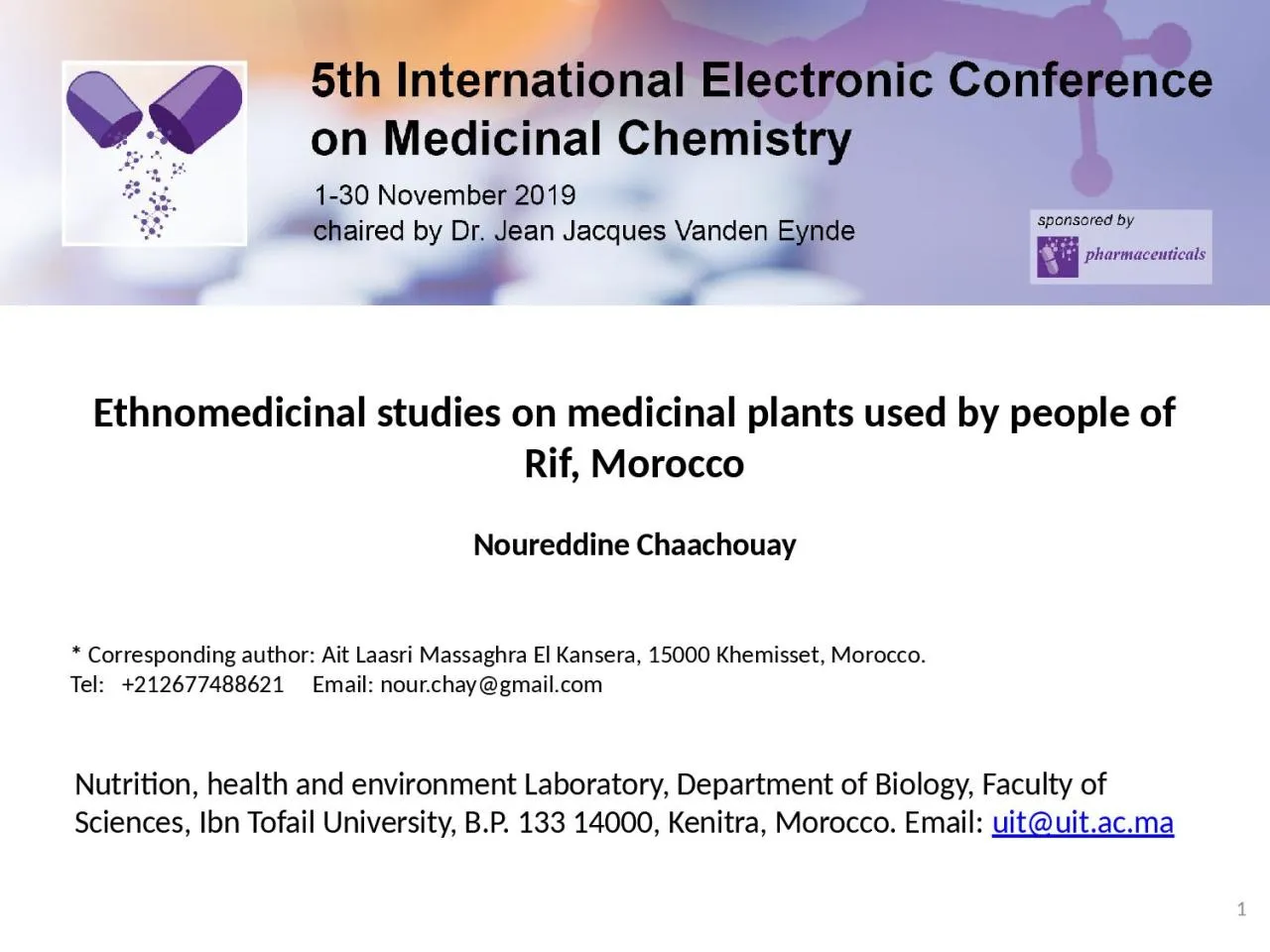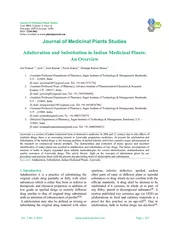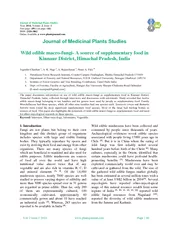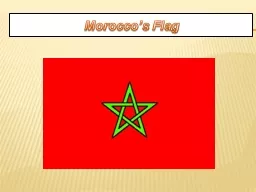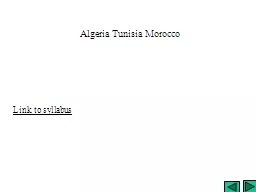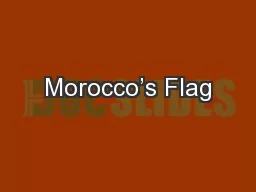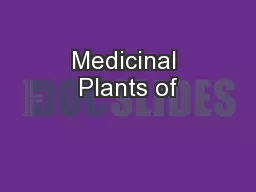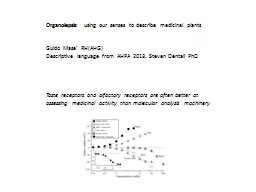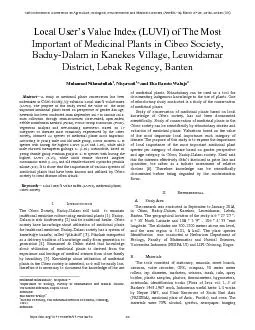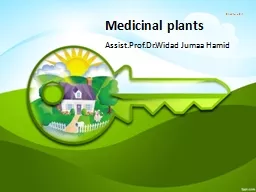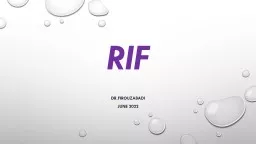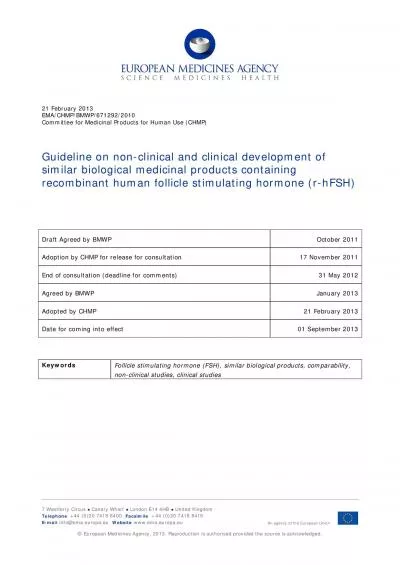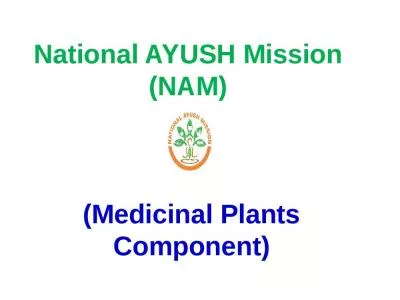PPT-Ethnomedicinal studies on medicinal plants used by people of Rif, Morocco
Author : singh | Published Date : 2022-06-07
Noureddine Chaachouay Corresponding author Ait Laasri Massaghra El Kansera 15000 Khemisset Morocco Tel 212677488621 Email nourchaygmailcom Nutrition health
Presentation Embed Code
Download Presentation
Download Presentation The PPT/PDF document "Ethnomedicinal studies on medicinal pl..." is the property of its rightful owner. Permission is granted to download and print the materials on this website for personal, non-commercial use only, and to display it on your personal computer provided you do not modify the materials and that you retain all copyright notices contained in the materials. By downloading content from our website, you accept the terms of this agreement.
Ethnomedicinal studies on medicinal plants used by people of Rif, Morocco: Transcript
Download Rules Of Document
"Ethnomedicinal studies on medicinal plants used by people of Rif, Morocco"The content belongs to its owner. You may download and print it for personal use, without modification, and keep all copyright notices. By downloading, you agree to these terms.
Related Documents

